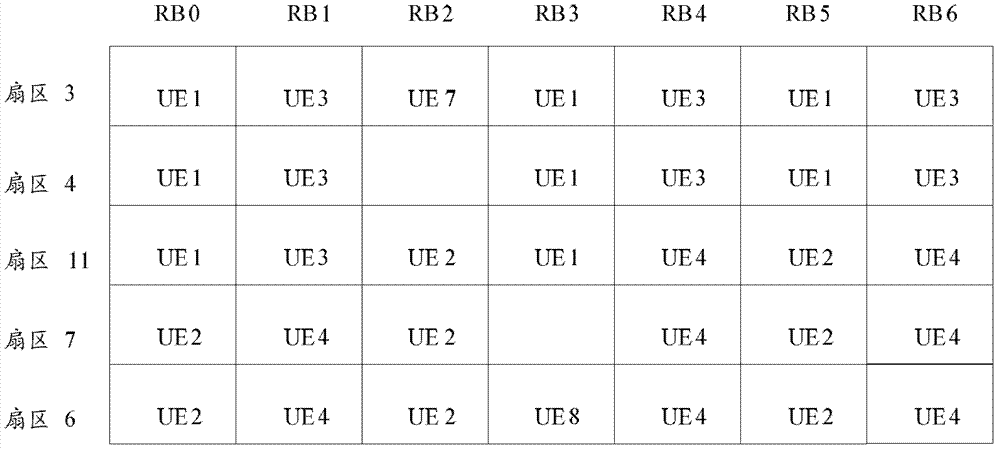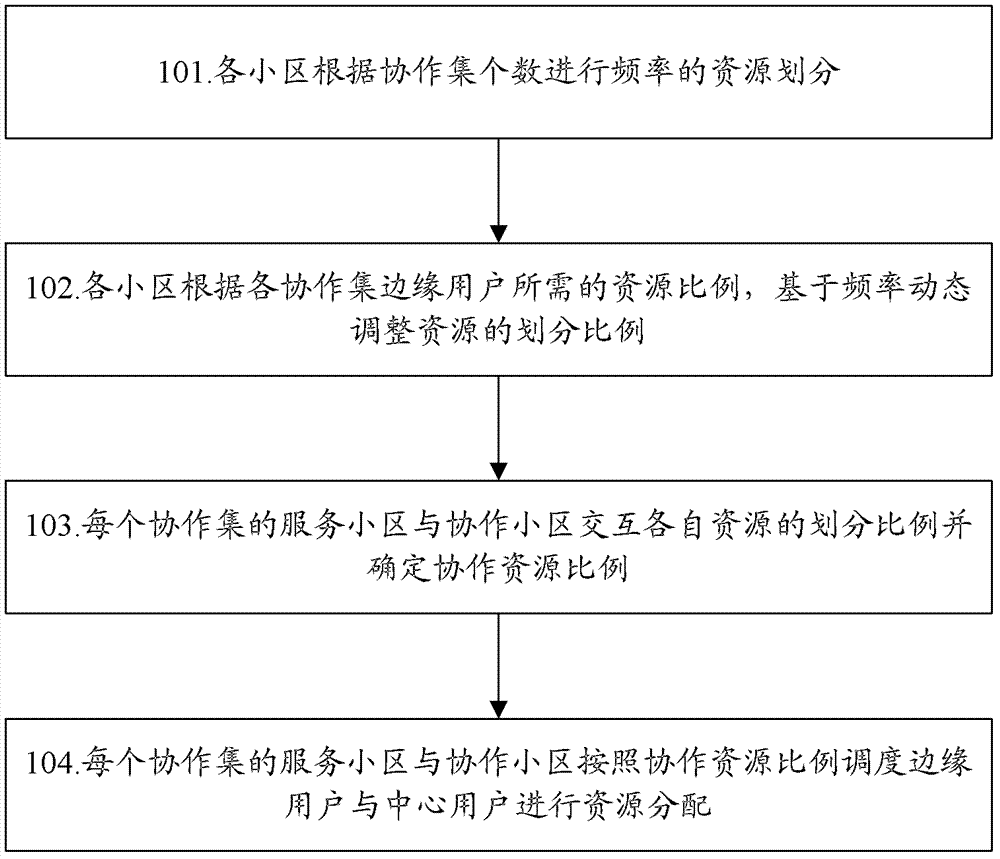A resource allocation method, device and base station based on joint multi-point processing
A resource allocation device and resource allocation technology, which are applied in the field of joint multipoint processing, can solve problems such as conflicts and RB0 cannot be allocated at the same time, and achieve the effects of avoiding residuals and resolving conflicts.
- Summary
- Abstract
- Description
- Claims
- Application Information
AI Technical Summary
Problems solved by technology
Method used
Image
Examples
Embodiment Construction
[0039] The basic idea of the present invention is: each cell divides frequency resources according to the number of cooperation sets, and dynamically adjusts the division ratio of resources based on frequency according to the resource ratio required by edge users of each cooperation set; The cells exchange the division ratio of their respective resources and determine the ratio of cooperation resources; according to the ratio of cooperation resources, edge users and central users are scheduled for resource allocation.
[0040] The present invention will be further described in detail below with reference to the accompanying drawings and specific embodiments.
[0041] The present invention implements a resource allocation method based on CoMP, such as image 3 As shown, the method includes the following steps:
[0042] Step 101: each cell performs frequency resource division according to the number of cooperating sets;
[0043] Specifically, each cell divides resources by f...
PUM
 Login to View More
Login to View More Abstract
Description
Claims
Application Information
 Login to View More
Login to View More - R&D
- Intellectual Property
- Life Sciences
- Materials
- Tech Scout
- Unparalleled Data Quality
- Higher Quality Content
- 60% Fewer Hallucinations
Browse by: Latest US Patents, China's latest patents, Technical Efficacy Thesaurus, Application Domain, Technology Topic, Popular Technical Reports.
© 2025 PatSnap. All rights reserved.Legal|Privacy policy|Modern Slavery Act Transparency Statement|Sitemap|About US| Contact US: help@patsnap.com



